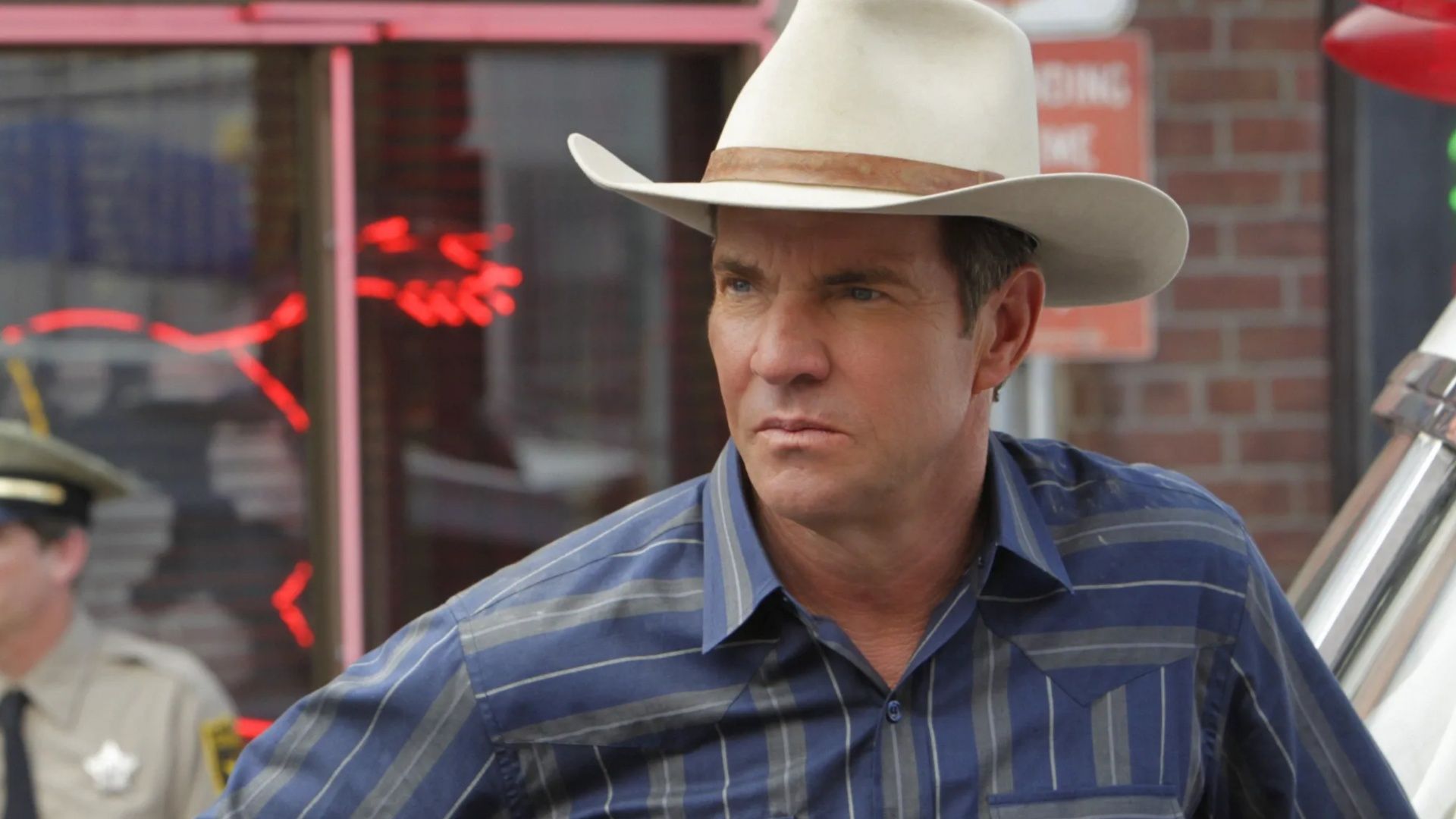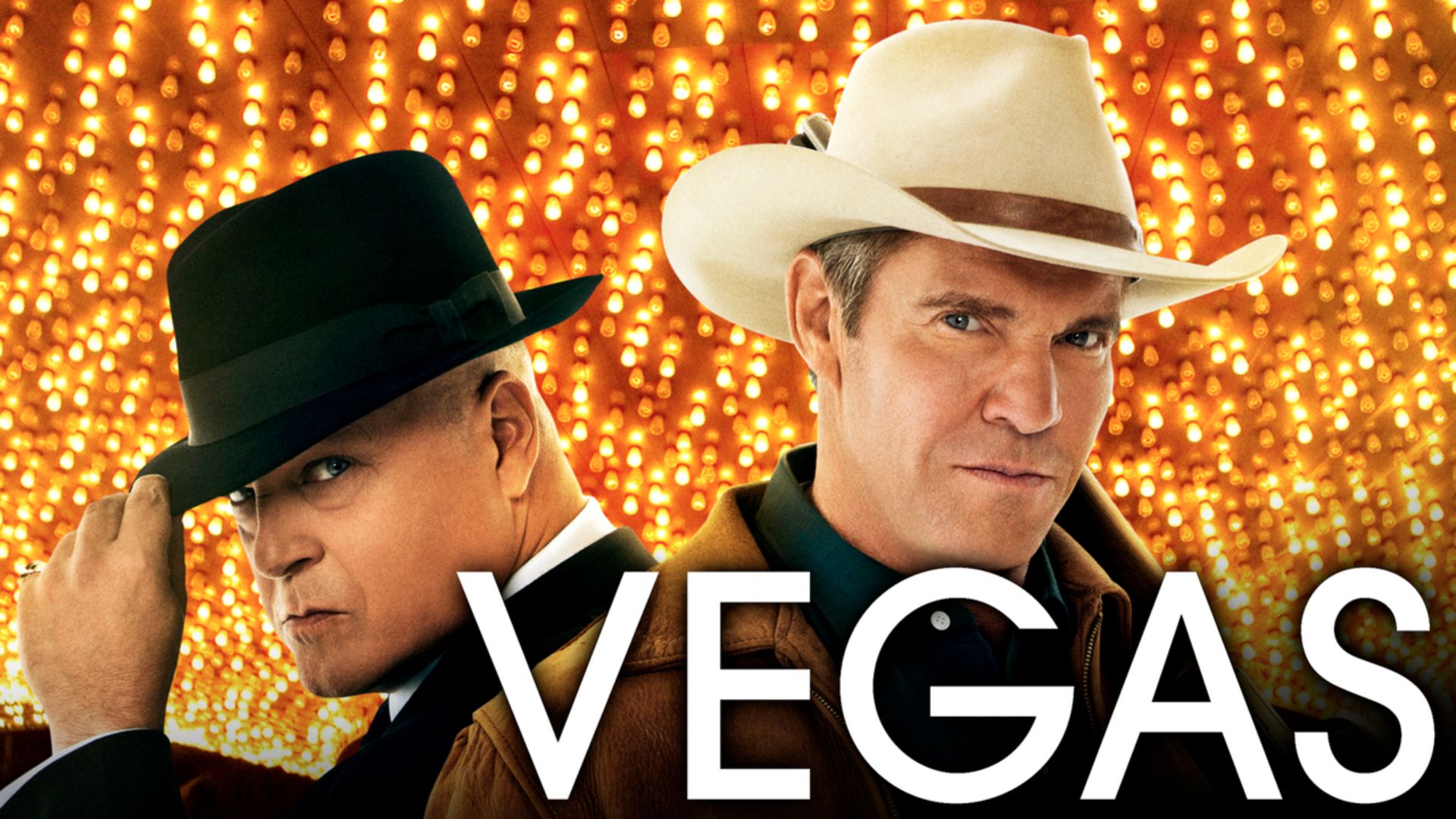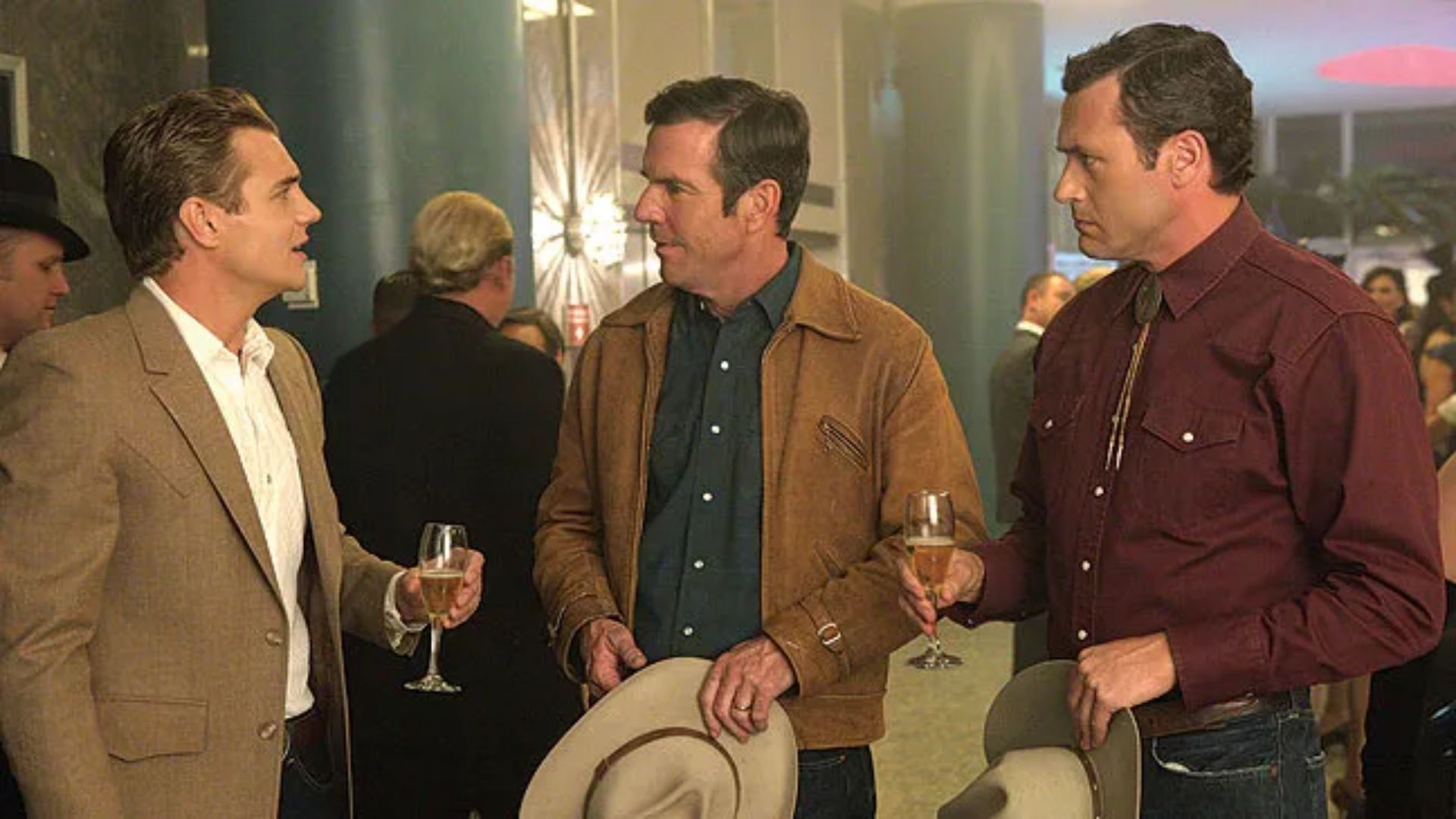
Prior to becoming a renowned screenwriter, Nicholas Pileggi had spent decades as a seasoned journalist, delving into the intricacies of the New York City mob. Leveraging his unique insights, he penned the books “Wiseguy: Life in a Mafia Family” and “Casino: Love and Honor in Las Vegas.” These books were later transformed into the critically acclaimed mobster films “Goodfellas” (1990) and “Casino” (1995), under the guidance of Martin Scorsese. In 2012, Pileggi took his portrayal of the mafia to television with the CBS series, titled “Vegas.
Dennis Quaid and Michael Chiklis on Opposite Sides of the Law
Instead of delving deeper into the criminal exploits that flourished in Las Vegas during the ’70s and ’80s, Pileggi opted for a unique perspective. He chose to situate his show in the ’60s, aiming to illuminate the dramatic metamorphosis of the once quiet desert town into a bustling city notorious for its mob influence and sinful allure.
In his debut on television, Dennis Quaid heads the cast of “Vegas.” He takes on the role of a true-life character, Ralph Lamb, who is both a local rancher and sheriff. As he tackles crime in the town, mobsters begin arriving and establishing their businesses. Playing against Quaid is Michael Chiklis (notably famous for depicting law enforcement officials in series like “The Shield” and “Hotel Cocaine”) as Vincent Savino, a casino and hotel owner with mob connections who serves as Sheriff Lamb’s primary adversary. Joining them are Jason O’Mara as Lamb’s brother, Carrie-Anne Moss as the Assistant District Attorney, and Taylor Handley as Lamb’s troubled son.
‘Vegas’ Highlights Two Clashing Worlds

In Vegas, while there’s a regular crime-solving routine, the main focus is on the relationship between Sheriff Lamb and Vincent Savoy. They represent contrasting worlds that often collide, yet they share more similarities than they realize. Essentially, they serve as mirrors to each other, each representing distinct sides but with hidden commonalities. In the first episode, Dennis Quaid’s character spends a significant amount of time engaging in physical altercations with those disturbing his cattle by secretly bringing in the mafia. This isn’t far removed from a mobster’s retaliation after betrayal, such as breaking kneecaps.
In essence, Lamb and Savino, two significant individuals, serve as symbolic leaders during a tumultuous era in Las Vegas’ development into a renowned American city, forever etched in history. Placing the series Vegas in the 1960s sets it apart from other mob tales prevalent in modern media. Instead of zeroing in on the glamorous personas of past criminals, as seen in Goodfellas, this show seeks to weave a broader narrative, offering an ideal canvas to delve into the characters’ driving forces and the lifestyles they embody.
According to Pileggi, he chose to concentrate on the 1960s rather than the 1970s and 1980s, topics that have been central in much of his past studies and projects, because he found the 60s a more intriguing period to explore.
1959 and 1960 marked a period when Las Vegas, once known primarily as a western town filled with cowboys, began to experience an influx of organized crime elements. The atmosphere started shifting, as fedoras gradually replaced the traditional cowboy hats. During this time, Ralph Lamb served as the sheriff in Las Vegas during the 1960s. He was a cowboy on horseback, suddenly confronted by the arrival of numerous mafiosi. This situation can be likened to John Wayne’s character facing off against Edward G. Robinson’s.
Authenticity Is Important in ‘Vegas’

Writing ‘Vegas’ served as a therapeutic respite for Nicholas Pileggi after the passing of his wife, renowned filmmaker Nora Ephron. Known for timeless romantic comedies like ‘When Harry Met Sally…’, ‘Sleepless in Seattle’, and ‘You’ve Got Mail’, Ephron’s influence on the show was evident as her advice to Pileggi before her death emphasized the need for authenticity: “This one is for real – you can’t just do it half-heartedly.” This dedication to authenticity likely contributed to the creation of the highly immersive and accurate period set featured in ‘Vegas’.
An essential aspect of Vegas‘ authenticity stems from its roots in reality. Pileggi interacted extensively with the actual Ralph Lamb, amassing details. His background with mobsters enabled Lamb to trust him, and the ex-sheriff emerged as a crucial element in the narrative. Remarkably, he also developed a rapport with Dennis Quaid, who faced the challenging task of embodying a real person while that individual was still alive to scrutinize his portrayal. Vegas proved successful for Quaid, revitalizing his television career which had been relatively inactive prior to the show. Since then, he has secured significant roles in numerous series, most notably playing a notorious serial killer in Netflix’s Happy Face.
Despite being abruptly ended after just one season, “Vegas” remains an engaging and thoughtfully scripted series that offers a compelling portrayal of a crucial era in American history. Its unique blend of the Wild West and organized crime is unparalleled among shows from its time, making it a captivating study on identity and change. After you’ve finished watching “Vegas”, consider checking out Nicholas Pileggi’s latest work, “The Alto Knights” (2025), which features Robert De Niro reprising his role as — you guessed it — a mob boss.
Read More
- Gold Rate Forecast
- SteelSeries reveals new Arctis Nova 3 Wireless headset series for Xbox, PlayStation, Nintendo Switch, and PC
- PI PREDICTION. PI cryptocurrency
- Eddie Murphy Reveals the Role That Defines His Hollywood Career
- Rick and Morty Season 8: Release Date SHOCK!
- Discover the New Psion Subclasses in D&D’s Latest Unearthed Arcana!
- Masters Toronto 2025: Everything You Need to Know
- We Loved Both of These Classic Sci-Fi Films (But They’re Pretty Much the Same Movie)
- Discover Ryan Gosling & Emma Stone’s Hidden Movie Trilogy You Never Knew About!
- Linkin Park Albums in Order: Full Tracklists and Secrets Revealed
2025-04-25 03:02